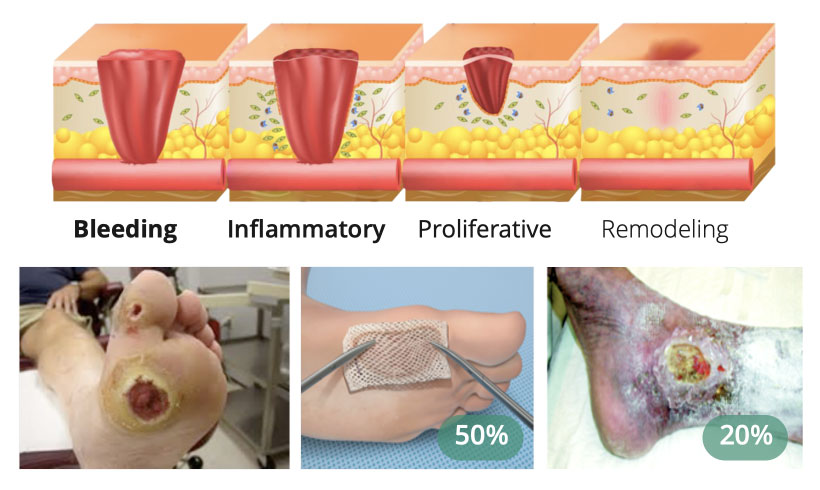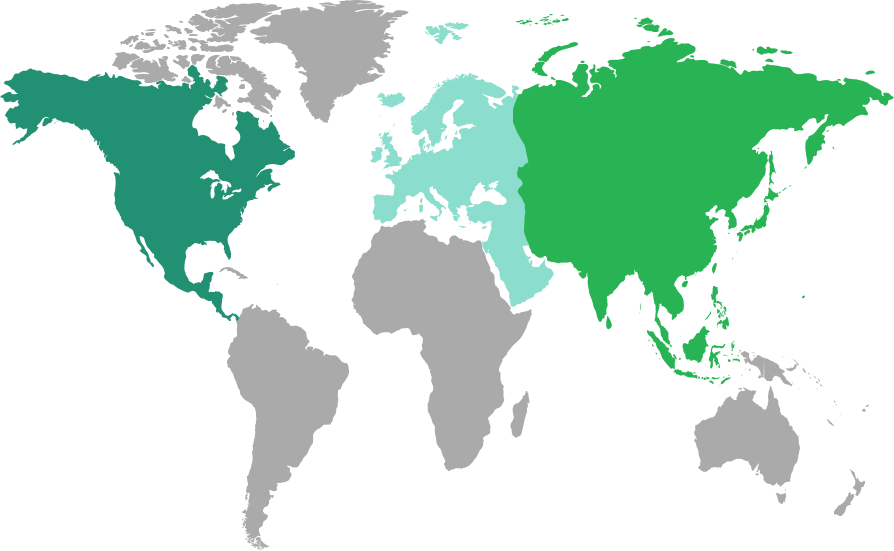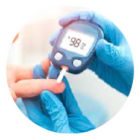Chronic Wounds
Definition & Current situation

Chronic wounds fail to progress through the phases of healing in an orderly way and show no progress towards healing after 30 days.
Unmeet Need – E.g. Diabetic Foot Ulcer
Chronic Wounds
Incidence & Drivers
Annual incidence (2018)

7.5M
4.5M
4.0M
Main Drivers

Aging

Obesity

Diabetes
Chronic Wounds
Market Size: CAGR 7.5%
$25B
Chronic wound market (2018)
$15B
Wound care management products per year
$2.4B
Therapeutical & Device market for current options per year
Key Players: Only provide palliative treatment





A growing market
- In 2012 in the US alone, 6 million patients (2% of population) suffered from chronic wounds.
- Chronic wound care costs exceed $50 billion per year (conservative estimate).
- In 2012, the global wound care management market stood at $11.7 billion.
- The projected 2021 worth of the wound care management market is $18.5 billion.
- Demographic factors such as aging, diabetes, and obesity contribute to rapid market growth.
- Key drivers include the Affordable Care Act and recent Center for Medicare and Medicaid Services proposals.
Potential customers
- Trauma physicians, dermatologists, plastic surgeons, and treatment centers.
- Medical device companies (potential distributors or licensees with established distribution channels).
- Our wound patients (end users), that suffer from chronic wounds, diabetic foot ulcers, burns, or bedsores.
- Insurance companies as payers in the value chain.


Problem and need
- The cost of wounds is affected by prolonged and intensified treatment, as well as prolonged hospitalization and specialized treatment.
- Chronic wounds can lead to serious infections, gangrene, and in the worst cases amputation.
- Currently low rates of wound closure.
- Rise in prevalence of chronic wounds, has led to an increased demand for management approaches and device platforms dedicated to wound-care.
- Actual products continue to provide only palliative treatment: Patient mobility, quality of life and overall individual well being are not positively affected.
- These issues call for a dramatic change of focus on improving the effectiveness of the wound healing process.
Value added
- Trauma physicians, dermatologists, plastic surgeons, and treatment centers.
- Medical device companies (potential distributors or licensees with established distribution channels).
- Our wound patients (end users), that suffer from chronic wounds, diabetic foot ulcers, burns, or bedsores.
- Insurance companies as payers in the value chain.



